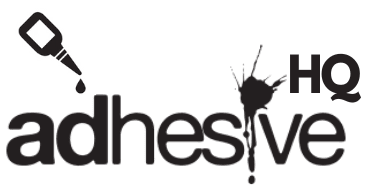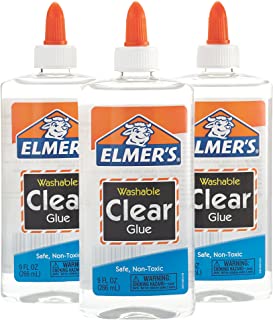Will 3M Adhesive Ruin Paint?How to Protect Your Surfaces and Remove Adhesives Safely
Adhesives are incredibly useful, but they also raise an important question for anyone using them on painted surfaces: Will 3M adhesive ruin paint?
The short answer is that 3M adhesives can potentially damage paint if not handled properly, but the good news is that with the right application and removal techniques, this risk can be minimized. In this blog, we’ll explore how 3M adhesives interact with paint, common mistakes to avoid, and how to safely remove the adhesive without ruining your paint job.
Key Takeaways
- 3M adhesives are designed to be safe for most painted surfaces, but improper use can lead to paint damage.
- Different types of paint, such as automotive paint and wall paint, may react differently to adhesives.
- The removal process is crucial—using proper adhesive removers and techniques like heat can prevent damage.
- Not all adhesives are created equal; some 3M products, such as Command Strips, are specifically designed to avoid damaging paint.
Part 1: Understanding 3M Adhesive and Its Impact on Paint
What Is 3M Adhesive and How Does It Work?
3M adhesives are known for their high-quality bonding and versatility. Whether you’re using double-sided tape, foam adhesives, or even specialized Command Strips, these products are designed to stick to a wide variety of surfaces, including painted walls and car exteriors. The adhesive strength of 3M products comes from their unique formula, which provides strong bonding while being removable in most cases.
But this same strength can sometimes lead to problems. If the adhesive is left on for too long or applied improperly, it may bond too strongly to the paint, making removal tricky and potentially damaging the surface underneath.
Can 3M Adhesive Ruin Paint?
The potential for 3M adhesive to ruin paint depends on several factors. Let’s break down some of the key reasons why adhesive residue might damage paint:
- Adhesive Strength: Some 3M adhesives, particularly heavy-duty tapes, are designed to hold significant weight. This strength can sometimes pull up paint when the adhesive is removed, especially if the paint wasn’t applied well in the first place.
- Paint Quality: Not all paints are created equal. High-quality automotive paint is more durable than low-cost interior paints. If the paint is old, thin, or improperly applied, it’s more likely to be damaged during adhesive removal.
- Surface Preparation: If you apply 3M adhesive to a dirty or unprimed surface, it might bond too tightly. A well-prepped surface (clean, dry, and fully cured paint) ensures that the adhesive comes off more easily.
- Duration of Adhesion: Leaving adhesive on for a long time can increase the risk of damage. Over time, the adhesive bonds more firmly to the paint, which can make removal difficult and increase the chance of peeling or chipping the paint.
What Types of Paint Are Most Affected by 3M Adhesive?
Some types of paint are more vulnerable to 3M adhesives than others:
- Automotive Paint: Car paint is often protected with a clear coat, but strong adhesives can still cause issues if left on for too long. For example, 3M double-sided tape used on car trim can pull off paint if not removed properly.
- Matte Finishes: Matte finishes, whether on cars or walls, tend to be more delicate. Adhesive residue can leave visible marks, and the removal process might scuff or remove the paint.
- Household Wall Paint: Wall paint varies in quality, with some being more prone to damage. Flat or satin finishes tend to be more delicate, whereas glossy or semi-gloss paints are more durable.
Part 2: Preventing Paint Damage from 3M Adhesive
How to Safely Remove 3M Adhesive Without Ruining Paint
The good news is that 3M adhesive can often be removed without ruining the paint, as long as the right techniques are used. Here are some safe removal methods:
- Heat Application: One of the easiest ways to remove 3M adhesive is by applying gentle heat with a hairdryer. The heat softens the adhesive, making it easier to peel away without pulling up the paint.
- Use Adhesive Removers: Special adhesive removers like 3M’s own Adhesive Cleaner or other safe alternatives are designed to break down the adhesive’s bond without damaging the paint. These can be particularly useful for removing residue left behind after peeling off the adhesive.
- Plastic Scrapers: Avoid metal tools as they can scratch the paint. Instead, use a plastic scraper to gently lift the adhesive off the surface.
- Peel Slowly: Quick removal is more likely to damage paint. Instead, peel the adhesive away slowly and at a 45-degree angle.
By following these steps, you can greatly reduce the chance of damaging your painted surfaces.
Does 3M Provide Adhesive Products That Are Safe for Paint?
Yes, 3M has several adhesive products that are designed to be safe for painted surfaces. For example, 3M Command Strips are specifically designed for use on walls and can be removed without leaving any residue or damaging the paint. They are particularly useful for temporary applications like hanging pictures or decorations on painted walls.
Other paint-safe adhesives include low-tack painter’s tape and 3M masking tapes, which are designed for use during painting projects and can be removed without affecting the surface underneath.
Common Mistakes to Avoid When Using 3M Adhesive on Paint
Avoiding these common mistakes will help protect your paint:
- Applying Adhesive to Fresh Paint: Newly painted surfaces should be given time to fully cure (typically 7-30 days depending on the paint type) before applying adhesive. Adhesive can bond too strongly to uncured paint, leading to damage.
- Leaving Adhesive on Too Long: Over time, adhesives bond more strongly with paint. If you’re using 3M adhesive for a temporary purpose, like hanging decorations, try to remove it within a few days to avoid potential damage.
- Not Cleaning the Surface: Dirt and oils on the surface can interfere with adhesion, leading to uneven bonding. This can make removal more difficult and increase the chance of damaging the paint.
Alternatives to 3M Adhesive That Won’t Ruin Paint
If you’re looking for alternatives to 3M adhesives that are even less likely to damage paint, consider these options:
- Painter’s Tape: Specifically designed for use on painted surfaces, this tape is low-tack and easily removable without damaging paint.
- Velcro Strips: For hanging objects on walls, Velcro strips provide a great alternative to adhesives and can be removed without peeling paint.
- Putty: Wall-safe mounting putty is another excellent alternative for lightweight items and won’t leave residue or damage when removed.
FAQs: Will 3M Adhesive Ruin Paint?
Will 3M Double-Sided Tape Damage Car Paint?
Answer: 3M double-sided tape can potentially damage car paint if left on for too long or removed improperly. However, when used correctly and removed carefully, it shouldn’t cause damage. Heat application and adhesive removers are essential tools for safe removal.
Can 3M Adhesive Be Removed Without Peeling Paint?
Answer: Yes, using the correct removal techniques—such as applying heat, using adhesive remover, and peeling slowly—you can remove 3M adhesive without peeling or chipping paint.
Is 3M Command Strip Safe for Painted Walls?
Answer: Yes, 3M Command Strips are designed specifically for painted walls and can be removed cleanly without causing damage if used and removed as directed.
How Long Should You Leave 3M Adhesive on Paint Before Removing?
Answer: The longer you leave 3M adhesive on a painted surface, the higher the risk of damage. For temporary applications, it’s best to remove the adhesive within a few days. If it’s left on for months or years, removal becomes more difficult and may result in peeling paint.
What Should You Do If 3M Adhesive Ruins the Paint?
Answer: If you experience paint damage, the best course of action is to sand the area lightly and apply a touch-up paint. For larger areas, you may need to repaint the surface.
Conclusion
While 3M adhesives are widely used and trusted, they can potentially damage paint if not used or removed properly. By understanding how adhesives interact with different paint types and following safe removal techniques, you can avoid damaging your car paint, wall paint, or other painted surfaces.
When in doubt, always test the adhesive on a small, inconspicuous area before applying it to the full surface. Following these tips will help you use 3M adhesives effectively while keeping your paint intact.

